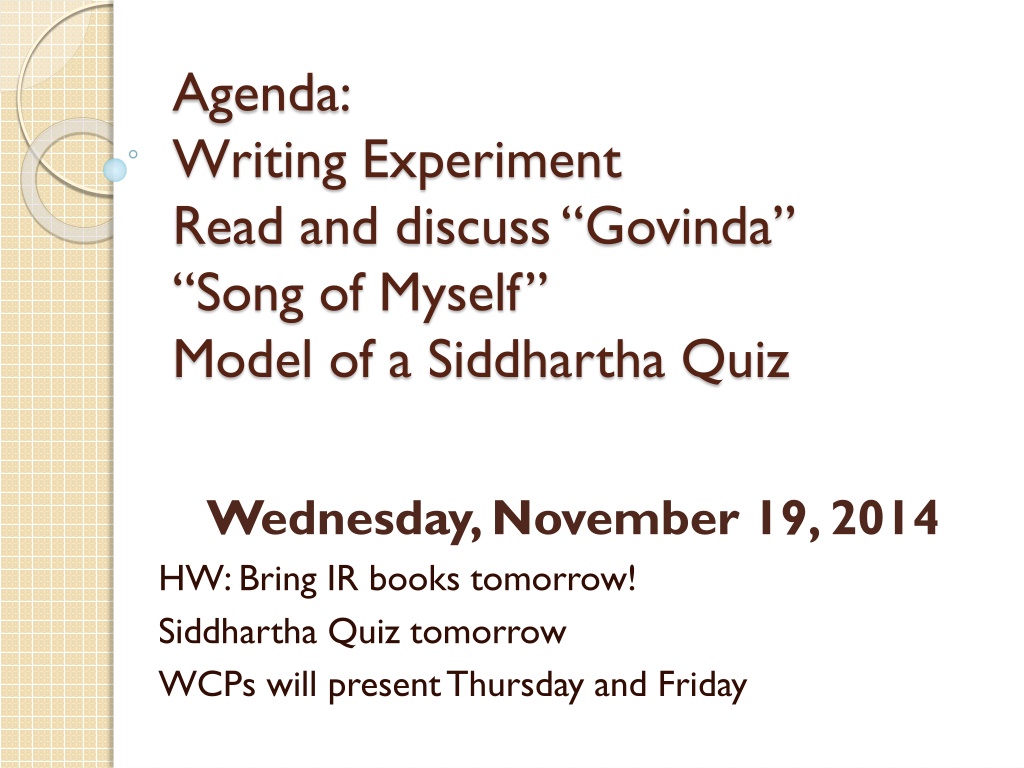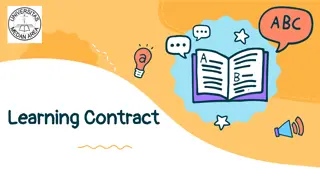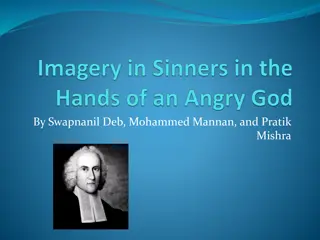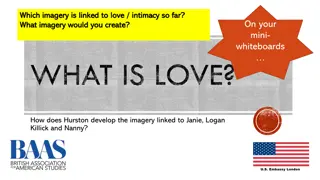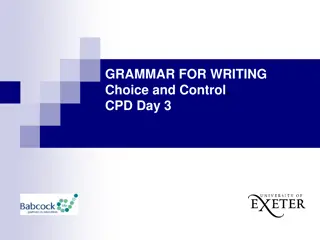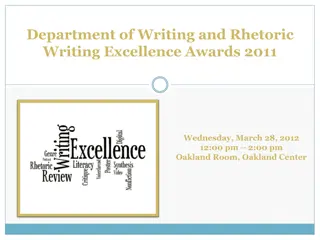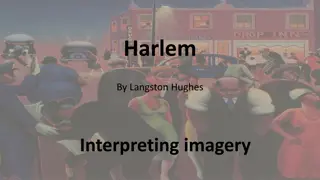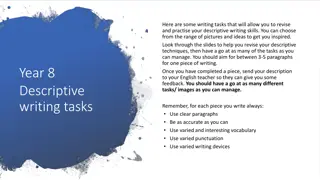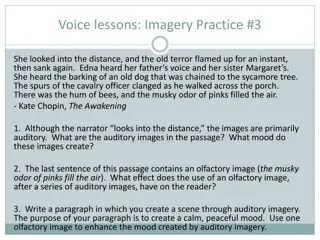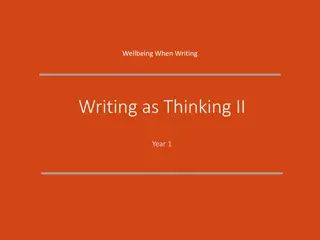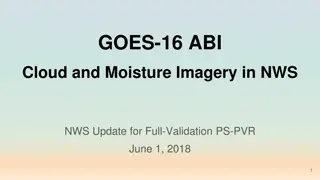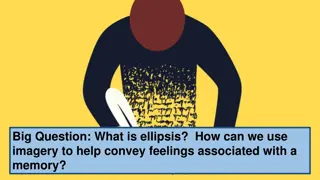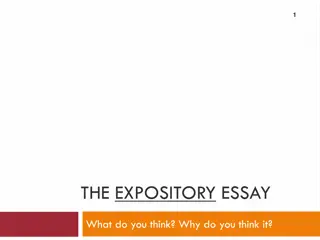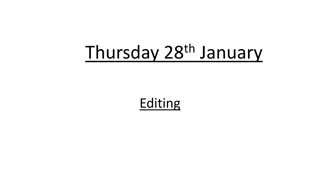Exploring Imagery Through Writing and Discussion
Delve into the use of imagery in writing through activities like reading, discussing poetry, and connecting themes to literary works. Understand how imagery enhances the reading experience and try creating your own vivid descriptions. Engage in a creative exploration of language and sensory experiences.
Download Presentation

Please find below an Image/Link to download the presentation.
The content on the website is provided AS IS for your information and personal use only. It may not be sold, licensed, or shared on other websites without obtaining consent from the author. Download presentation by click this link. If you encounter any issues during the download, it is possible that the publisher has removed the file from their server.
E N D
Presentation Transcript
Agenda: Writing Experiment Read and discuss Govinda Song of Myself Model of a Siddhartha Quiz Wednesday, November 19, 2014 HW: Bring IR books tomorrow! Siddhartha Quiz tomorrow WCPs will present Thursday and Friday
Objectives I will write in a way that incorporates imagery. I will read aloud in a small group. I will read a free verse poem and connect it to Siddhartha in three specific ways.
Imagery Imagery = language that appeals to the senses. Why would writers try to use it? Reading becomes a bodily experience. We can connect words to sensations, scents, sounds, or images. We experience as we read.
An Example Beside the lake, beneath the trees, Fluttering and dancing in the breeze. Continuous as the stars that shine And twinkle on the Milky Way, They stretch'd in never-ending line Along the margin of a bay: Ten thousand saw I at a glance, Tossing their heads in sprightly dance. From Wordsworth s Daffodils
How do you write/create imagery? Write around the first word that comes to mind. Try to rename the first word that comes to mind. For Example: Grass BORING!!! Emerald carpet Now we re imagining things!
When do I use it? Sometimes straightforward and clear language is necessary/required. But sometimes there s a place for it because it can help your reader better understand because they understand on a deeper level, through experience . Poetry Creative short stories Personal essays
Practice A bug Your cellphone Your favorite food
My soul is My soul is an ocean My soul is an endless body of saltiness and sweetness that breaks waves on the shore of Doylestown. Describe the way your soul looks, tastes, smells, feels, and sounds. Start each sentence with my soul is and write as many of these sentences as possible. Remember to write around the first word that enters your head.
Enlightenment/Wisdom When an individual s soul becomes part of the world s soul.
Om: Siddharthas Nirvana Understanding that creation, the world, is an indivisible whole. Knowledge of the eternal perfection (completeness) of the world. Everything is in order. To understand that one must simply love and enjoy the world in all its aspects, good and bad. Eternal peace with the world
Read Govinda in Small Groups On the page, write three lessons Govinda learns from Siddhartha. Well.. Siddhartha tries to teach him
Govinda You seek too much and as a result of your seeking you cannot find He is constantly striving instead of just being.
Govinda Siddhartha says you cannot teach wisdom. What does wisdom mean to you? Do you know anyone who is wise?
Govinda In every truth the opposite is equally true (143). Anything that is thought or expressed in words is one-sided, only half of the truth. The world is not one-sided. Never is a man wholly a saint or a sinner What is your opinion on this?
Govinda Love is the most important thing in the world. (147) Do you agree? Why didn t Buddha teach love?
Govinda Does Govinda reach enlightenment? Why or why not? What caused/allowed Govinda to finally see ?
Song of Myself 1. Read this free verse poem with a partner. 2. Find three specific ways that this poem relates to Siddhartha. 3. Line 9 perfect health begin, Begin what? 4. Describe the tone of the poem.
A Fan Ralph Waldo Emerson once described Whitman s poetry as a remarkable mixture of the Bhagavad Gita and the New York Herald .
Next Walt Whitman was alive when? He lived in America, so what part of America s history did he witness?
What if I told you? He meant the I to represent the voice of democratic America? Also, he did not publish his name with his first several editions of Leaves of Grass. 5. How does this change the meaning of the poem?
Democracy Political and philosophical system that insists on placing an equal value on every single human being. Everyone in a democracy has a self worth celebrating!
Tone? Some readers find his celebration of himself egotistical, but he insisted that he was singing an inclusive, democratic song, and he was inviting everyone in the nation to join in.
His Purpose He believed that America had to overcome discriminatory and antidemocratic ways of thinking and acting: it was crucial for Americans to learn to share beliefs ( What I assume you shall assume ) instead of be divided by them. And it is important not to value people by what they own.
His Purpose He wanted to find a way that would preserve the Union and eventually end slavery. Whitman sensed that America was becoming a colder, more capitalistic country, where competition rather than camaraderie was encouraged between men. Love?
